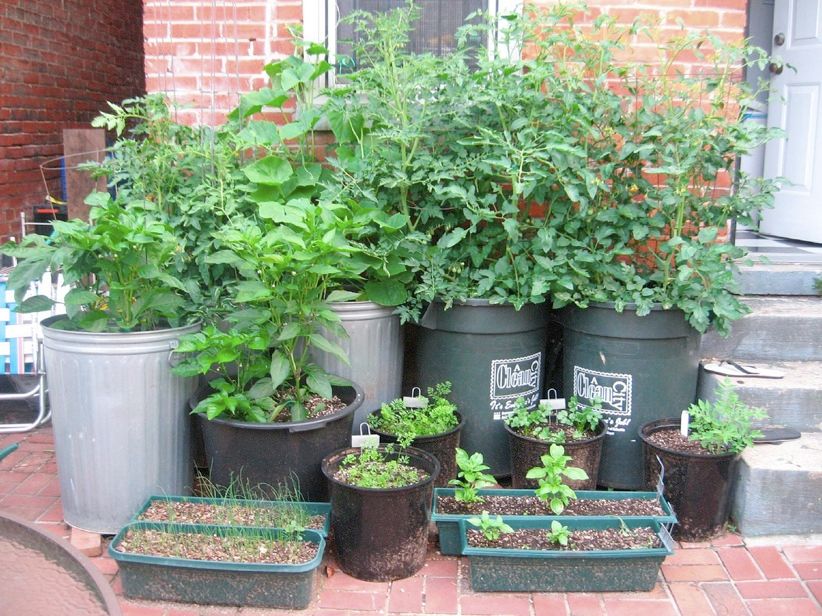In Those Tight Spaces
Container Gardening!!! What a great way to bring nature to your little piece of the earth..even if that piece is a concrete rooftop..lol It's true many people don't have any ground.. I know that's kind of hard for us Midwesterner's to believe.. But believe it or not it happens!! I'm kidding of course..but right now I'm picturing one of my favorite movies.."Just Like Heaven"..where the girl lives in a inner city apartment and dreams of having a lovely garden on her rooftop..her love interest who is a landscape designer ends up building her the most beautiful roof top garden you have ever seen. It's as if you were smack dad in the middle of one of Mother Earths most lovely natural landscapes..only it was created in a very different way.. You too can make your space that lovely..even if that space is only a apartment balcony..
Container gardens are suitable for patios
and porches, making them a favorite for apartments and urban homes that have
limited outdoor space. Container gardens aren't limited to apartments and city
homes, however, and they aren't limited to flowers or vines, either. Grow cacti,
succulents, herbs, vegetables and even fruit trees in your containers.
Container Size
 Large containers make a big impact. They
also provide more room for root development. For plants such as herbs and
vegetables, select planters with at least 12 inches of depth. Cacti and
succulents are shallow-rooted plants and require less water, so plant these in
planters with less depth, but with wide diameters. The roots spread outward
rather than downward. For flowers with shrub-like growth or vegetables, select
deep containers with broad diameters. For annuals that don't require deep
rooting systems, smaller containers work well, as the plant devotes more energy
to blooms than to root development.
Large containers make a big impact. They
also provide more room for root development. For plants such as herbs and
vegetables, select planters with at least 12 inches of depth. Cacti and
succulents are shallow-rooted plants and require less water, so plant these in
planters with less depth, but with wide diameters. The roots spread outward
rather than downward. For flowers with shrub-like growth or vegetables, select
deep containers with broad diameters. For annuals that don't require deep
rooting systems, smaller containers work well, as the plant devotes more energy
to blooms than to root development.
Planting Medium
Use a soil-less mix for your potting soil.
Garden soil or soil from your landscape is likely to be too heavy for a
container plant. The water will drain too slowly and your plants' roots will
suffocate from the weight of the soil. Use a mix that contains perlite,
vermiculite and peat moss or sorghum moss. Fertilize the soil with a
slow-release fertilizer to allow the plant to take only what it needs when it
needs it. This prevents root burn.
Watering
Watering a container differs from watering
your lawn or soil garden because the water is confined to the container and
drains only from the drainage hole. Different plants take up water at different
rates. Check each container daily to ensure the soil is not soggy or dry. The
soil should be slightly moist. If you decide to put several different plants in
one container, make sure they have similar watering requirements. Check for
water needs by thrusting your finger into the soil about 2 inches deep. If you
feel dry soil, water the plant.
Harvest and Deadhead
If you're growing herbs, take cuttings
frequently to encourage new growth. For vegetables, harvest just as you would in
a ground garden. Cut flowers when they bloom and use them in your home. If you
prefer to leave them in the container garden, cut off any blooms once they fade,
a process called "deadheading." This will encourage more blooms on the
plant.

Comments
Post a Comment